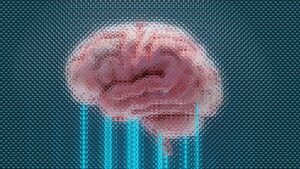Changing the Face of Machine Learning in the Future Through the Use of Foundation Models

Changing the Face of Machine Learning in the Future Through the Use of Foundation Models
Foundation models are one of the most revolutionary developments that have ever occurred in the field of artificial intelligence and machine learning. Foundation models are large-scale artificial intelligence systems that are trained on enormous and diverse datasets. These models are able to adapt to numerous downstream applications, in contrast to traditional models that are developed for specific, narrow and single-purpose activities. GPT, PaLM, Claude, and Gemini are examples of models that have redefined what artificial intelligence is capable of accomplishing. These models have transitioned from being specific task solvers to general-purpose learners that are able to write code, compose text, analyze data, and even reason across domains.
Do You Know What Foundation Models Are?
A vast neural network that has been trained on massive datasets is referred to as a foundation model. This model acts as a “foundation” for a variety of tasks that come after it. The majority of the time, they are constructed with transformer architectures and taught by self-supervised learning, which enables them to acquire a comprehensive grasp of language, vision, or multimodal content. Once trained, these models can be fine-tuned or altered for various use cases, ranging from chatbots and content generation to medical imaging and scientific discovery examples.
Scale and generalization are tremendously powerful.
One of the most distinguishing features of foundation models is their ability to accommodate a large amount of data and parameters. Foundation models are exposed to petabytes of information, which includes anything from books and code to social media and sensor data. Earlier AI models were trained on limited datasets to perform specialized tasks. Today, foundation models are exposed to a vast amount of information. They have a remarkable ability to generalize knowledge, manage ambiguous inputs, and transfer learning from one domain to another with minimum supervision as a result of the enormous training scope that they have.
The Transition from Specialized Models to Overarching Intelligence
Engineers would construct one-of-a-kind models for each application in the old approach to machine learning. For example, one model might be used for spam detection, another for picture classification, and so on. Foundation models introduce a complete disruption to this method. They may be trained once and then reused for an infinite number of applications, which significantly reduces the amount of time and money required for development and calculation. Language translation, question answering, summarization, and sentiment analysis are all tasks that may be performed by a single model such as GPT, and it does not require any further training from the ground up.
How Transfer and Few-Shot Learning Contribute to Learning
The transfer learning and few-shot learning capabilities of foundation models are exceptional. They can learn from a small number of examples or instructions, as opposed to needing to be provided with enormous datasets that have been tagged for each new task. This capability is analogous to the adaptability of humans, as we are able to carry out new tasks by drawing off our previous experiences. Few-shot learning makes it possible for businesses to deploy artificial intelligence solutions more quickly, especially in fields like healthcare or legal research, where labeled data is either difficult to collect or prohibitively expensive to acquire.
Foundation Models for Multimodal Systems: Going Beyond Text
Beyond the realm of language, the development of foundation models has progressed. The term “multimodal artificial intelligence” refers to the ability of modern models to incorporate text, images, audio, and video into a unified learning system. Models like as OpenAI’s GPT-4, Google’s Gemini, and Meta’s ImageBind are able to interpret and relate information across numerous forms. This enables them to perform tasks such as describing photos, making artwork based on language prompts, and evaluating complicated multimedia data. The combination of sensory awareness brings artificial intelligence closer to the perception of humans.
Facilitating Innovation Across All Sectors of the Economy
Nearly every industry is seeing a change brought on by foundation models. They have the ability to evaluate medical literature, interpret diagnostic imaging, and even assist in the discovery of new drugs in the healthcare industry. With regard to the financial sector, they enhance fraud detection and automate report preparation. Within the realm of education, they make learning experiences more personalized, and within the realm of scientific research, they assist in the synthesis of findings from millions of studies. A rate of innovation that was previously thought to be unattainable is being accelerated by the capability of adapting a single core model to an infinite number of applications.
Facilitating Access to More Advanced Artificial Intelligence
Before the advent of foundation models, the construction of a machine learning system that was capable of producing high-performance results required extensive expertise, a substantial amount of data, and a robust computational infrastructure. This paradigm shifts as a result of foundation models. Now, small enterprises and individual developers are able to harness cutting-edge artificial intelligence capabilities without having to train models from scratch thanks to application programming interfaces (APIs) and open-source frameworks. Through the use of platforms such as Hugging Face, OpenAI, and Anthropic, powerful foundation models have become available to anybody, hence reducing the obstacles that prevent innovation on a global scale.
Cost-effectiveness and scalability are the economic implications.
It is also the case that foundation models redefine the economics of machine learning. Organizations are able to grow artificial intelligence solutions more efficiently if they reuse a single basic model across a variety of jobs. Both the cost of training and maintenance, as well as the cost of data annotation, are reduced. Additionally, organizations are able to rapidly prototype and deploy artificial intelligence systems, which did not require years of development in the past. By taking a modular and scalable approach, artificial intelligence is being transformed into a flexible utility, comparable to the internet or energy.
Problems Relating to Ethics and the Environment
Despite the fact that they hold a great deal of promise, foundation models raise significant ethical and economic problems. Their education necessitates the utilization of enormous computer resources, which in turn results in substantial carbon footprints. Moreover, their outputs may reflect biases that are present in the training data, which may result in the perpetuation of stereotypes or incorrect information. For the purpose of preventing misuse and preserving public trust in artificial intelligence systems, it will be vital to ensure transparency, accountability, and justice as foundation models continue to gain in sophistication.
Governance and Regulation of Foundation Models by the Government
Frameworks that govern the creation and deployment of foundation models are now being investigated by academic institutes and government agencies of many nations. Policies place an emphasis on the privacy of data, the ability to explain it, and responsible use. A couple of early instances of attempts to restrict foundation model deployment were the Artificial Intelligence Act of the European Union and the AI Bill of Rights of the United States. Open auditing, bias reduction, and making sure that models are in line with human values and safety requirements are all examples of things that are emphasized in ethical guidelines.
Foundational Models and the Career Path of the Future
Both the future of work and the future of creativity are being reshaped by foundation models. Data entry, content authoring, and basic analysis are examples of routine operations that are rapidly being automated into computer systems. However, new opportunities are emerging for people to collaborate with artificial intelligence, with a particular emphasis on creativity, design, and strategy. Creativity and critical thinking are becoming more valuable than they have ever been before as the relationship between human intelligence and machine intelligence is growing into one of collaboration.
The Path Forward: The Process of Developing Artificial General Intelligence (AGI)
Artificial general intelligence (AGI) is a type of artificial intelligence that can comprehend, learn, and carry out any intellectual work that a human being is capable of. Foundation models are sometimes regarded as a stepping stone toward AGI. Foundation models have already proven important antecedents, like generalization, reasoning, and contextual comprehension, despite the fact that artificial general intelligence is only a theoretical concept. It is becoming increasingly difficult to differentiate between limited and general artificial intelligence (AI) as research continues to advance. This is moving us closer to a new era of intelligent systems that think and adapt differently than humans.
The conclusion is that there has been a radical shift in machine learning.
The landscape of machine learning has been shifted from specialized systems to generic intelligence that is adaptive, scalable, and general-purpose thanks to the introduction of foundation models. Their capacity to acquire knowledge in a wide sense and to use it in a flexible manner is a significant turning point in the development of artificial intelligence. As these models are refined by researchers, the challenge will be to strike a balance between innovation and responsibility. This will ensure that the future of artificial intelligence will not only contribute to the advancement of technology but also to the collective well-being of humanity. What we construct on top of the foundation will determine the course of human progress in the next century. The foundation has already been constructed.




